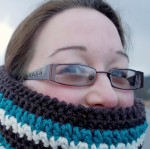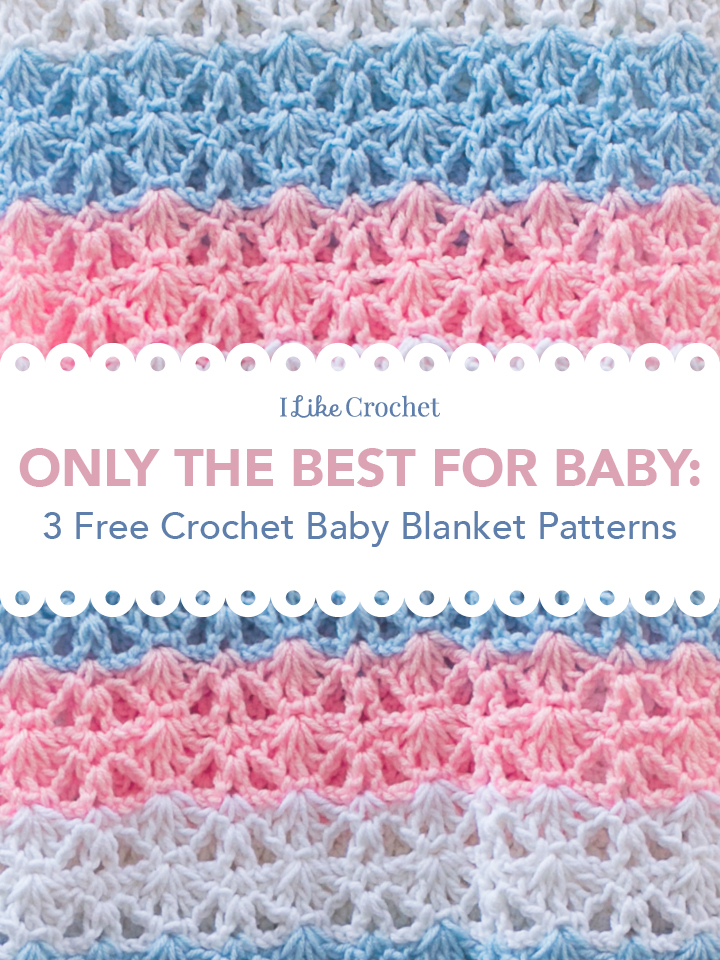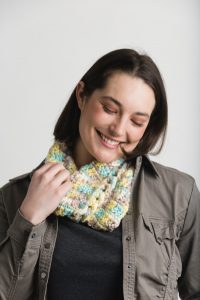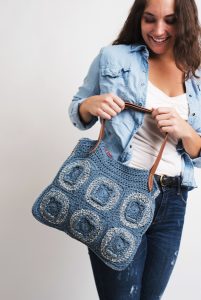
Without any sort of crochet terminology standardization, it’s so easy to misunderstand a pattern when stitches have the same name and the variance is enough to create mayhem if they are worked in the wrong way. After I discovered the difference, I challenged myself to become bi-crochet lingual and I’ve never looked back – in fact, it has probably helped shape me into the designer I am today as it opened up so many more possibilities of things I could crochet.
https://www.ilikecrochet.com/wp-content/uploads/UK-to-US-Crochet-Terms.pdf
I thought I’d share with you some of the methods I use to tell UK vs US crochet terms apart. First though, I’ve included this handy terms chart so you can see the differences (and use it for converting UK to US crochet terms and vice versa):
US and UK Crochet Terms
| US | UK | ||
| chain | ch | chain | ch |
| slip stitch | sl st | slip stitch | ss / sl st |
| single crochet | sc | double crochet | dc |
| half double crochet | hdc | half treble | htr |
| double crochet | dc | treble | tr |
| treble or triple | tr / tc | double treble | dtr |
| skip | miss | ||
| gauge | tension | ||
| yarn over | yo | yarn over hook | yoh |
It’s easy to see why the two sets of terms cause problems, isn’t it? But one way to look at it is that UK stitches are one step up from US stitches. So for example, the US single crochet is the same as the UK double crochet and the US double crochet is the same as the UK treble crochet.
And there are other ways to tell if it’s a US or a UK pattern before you start hooking:
- Read the blurb on the pattern, in the book, or in the About Me section on someone’s blog. Many designers and publishers now state which crochet terminology they are writing the pattern in.
- Stitches are still probably one of the quickest and easiest ways to interpret the crochet terminology. The key stitches to look out for are sc or hdc – only US patterns have those and htr will only appear in a UK pattern. If the pattern has neither of these stitches, then you might have to look at the hooks or yarn for hints.
- Hook sizes generally in modern UK patterns are written in the metric system (e.g. mm for milimeters) whereas US hook sizes are usually indicated by letters (e.g. G = 4mm). If there is a 2mm, 2.5mm or 3mm hook size stated then it’s most likely to be a UK pattern as the US sizes start with 1/B (2.25mm), C (2.75mm) and D (3.25mm).
US and UK Crochet Hook Sizes
| mm | US | UK |
| 2 | 14 | |
| 2.25 | B-1 | 13 |
| 2.5 | 12 | |
| 2.75 | C-2 | |
| 3 | 11 | |
| 3.125 | D | |
| 3.25 | D-3 | 10 |
| 3.5 | E-4 | 9 |
| 3.75 | F-5 | |
| 4 | G-6 | 8 |
| 4.5 | 7 | 7 |
| 5 | H-8 | 6 |
| 5.5 | I-9 | 5 |
| 5.75 | J | |
| 6 | J-10 | 4 |
| 6.5 | K-10.5 | 3 |
| 7 | 2 | |
| 8 | L-11 | |
| 9 | M/N-13 | |
| 10 | N/P-15 | |
| 11.5 | P-16 | |
| 12 | ||
| 15 | P/Q | |
| 15.75 | Q | |
| 16 | Q | |
| 19 | S | |
| 25 | T/U/X | |
| 30 | T/X |
- Continuing with the metric system as evidence to figure out the terminology; UK patterns not only have hook sizes in millimetres but the item measurements are likely to be in centimetres (cm) rather than inches. They are also more likely to have yarn measured in grams (g) rather than yards (yds).
- You could also check words and spelling in the pattern; if the word “color” is spelled “colour,” then that’s a big sign that you’re reading a UK pattern. Also US patterns are far more likely to use the word “skein” in yarn descriptions, whereas in UK crochet terminology it may be referred to as a “ball” of yarn.
- Finally, another clue when looking at the yarn is to see how the yarn thickness is described. In US patterns, you are likely to see fingering, sport, worsted or bulky. UK patterns often use the ply count of yarn so 3ply, 4ply, 8ply or Double Knit, Aran and Chunky. Here’s a handy chart to help you distinguish between US and UK yarn weights:
US and UK Yarn Weights
| US | UK |
| Laceweight | 1 ply |
| Fingering | 2 ply |
| Sock | 3 ply |
| Sport | 4 ply |
| DK/Light Worsted | DK |
| Worsted | Aran |
| Bulky | Chunky |
| Super Bulky | Super Chunky |
- Should you find yourself using a UK pattern and “translating” along the way, there are a few more elements to keep in mind. One of which, is turning chain differences that might not be so obvious. Here’s a helpful chart:
US and UK Crochet Turning Chains
| US Stitch | UK Stitch | Number of Turning Chain Stitches |
| Single crochet | Double crochet | 1 |
| Half double crochet | Half treble | 2 |
| Double crochet | Treble | 3 |
| Treble | Double treble | 4 |
| Double treble | Triple treble | 5 |
I hope that this has helped with your understanding of US and UK crochet terms. And although you are probably more than comfortable working with US crochet terms, I really do recommend familiarizing yourself with UK terms as well. Not that I’m biased (honest!), but there really are lots of amazing UK crochet patterns out there just waiting to be hooked! Being bi-crochet lingual opens so many artistic doors. One of my favorite things about designing for an American publication is having the chance to practice my US crochet terminology skills.
Colbie Cowl | Sleepy Unicorn Baby Booties | Stonewash Bag
 Heather C Gibbs is the owner of Keep Calm and Crochet On U.K. and has been designing patterns since 2012. She has designed over 90 patterns (at the moment) which includes toys, blankets and lots of crochet squares – many of which are free or available to buy from her Ravelry store. Her inspiration comes mainly from her daughter (hence the toy designs) but she loves nothing more than playing with yarn to see what develops. Her top 5 favourite things in the world are her family, friends, crochet, reading and chocolate.
Heather C Gibbs is the owner of Keep Calm and Crochet On U.K. and has been designing patterns since 2012. She has designed over 90 patterns (at the moment) which includes toys, blankets and lots of crochet squares – many of which are free or available to buy from her Ravelry store. Her inspiration comes mainly from her daughter (hence the toy designs) but she loves nothing more than playing with yarn to see what develops. Her top 5 favourite things in the world are her family, friends, crochet, reading and chocolate.







I really would like to have this in a little book or pamphlet. I am not able to print all of this out from my phone or tablet and I’m not that good at remembering or memorizing.
Hi Vera! Sorry about that, our download wasn’t showing up! I’m updating the article to include this link: https://www.ilikecrochet.com/wp-content/uploads/UK-to-US-Crochet-Terms.pdf
Hope this helps! – Nicola, Editor
Thank you so much. Just this week I came across a pattern that said “miss” a stitch, and I asked someone, “do you think that means skip?” Your article is so straight forward it was easy to grasp the differences.
Thank you so much for this information! I printed it out and will use it often. I am U.S. terms and have been working on U.K. patterns. I too want to be able to do all I can.
Thank you! I will be referring to this article often. This is confusing enough, but I also have needles and patterns in Canadian measurements which are totally different. Love the metric system!
Although I learnt to crochet 50 years ago using UK terms, I started using US terms in 2020, and find them so much simpler and they’re definitely more logical.
Great information; however, you didn’t mention that Canadian patterns are a combination of UK and US. Metric hooks and US stitch names.
Hi Agnes! This would be a great addition to this article! We will keep that in mind for the future, thank you! – Nicola, Editor
the easiest tip-off the earliest in a pattern to tell if the author is US or UK is to look early in for YO vs YOH. Hands down. And Gauge VS Tension
Hi Heather. Thanks for all this really useful information
I have discovered for my own sanity to stick with US stitch terms, but I use the mm hook sizes.
Pam1066
Thank-you so very much for sharing the comparison of US to UK terms. I struggled with this recently and had a hard time finding the information. You are making my desire to crochet even more.
You are very welcome! We are so glad that this article was helpful to you! Happy Crocheting 🙂 – Nicola, Editor